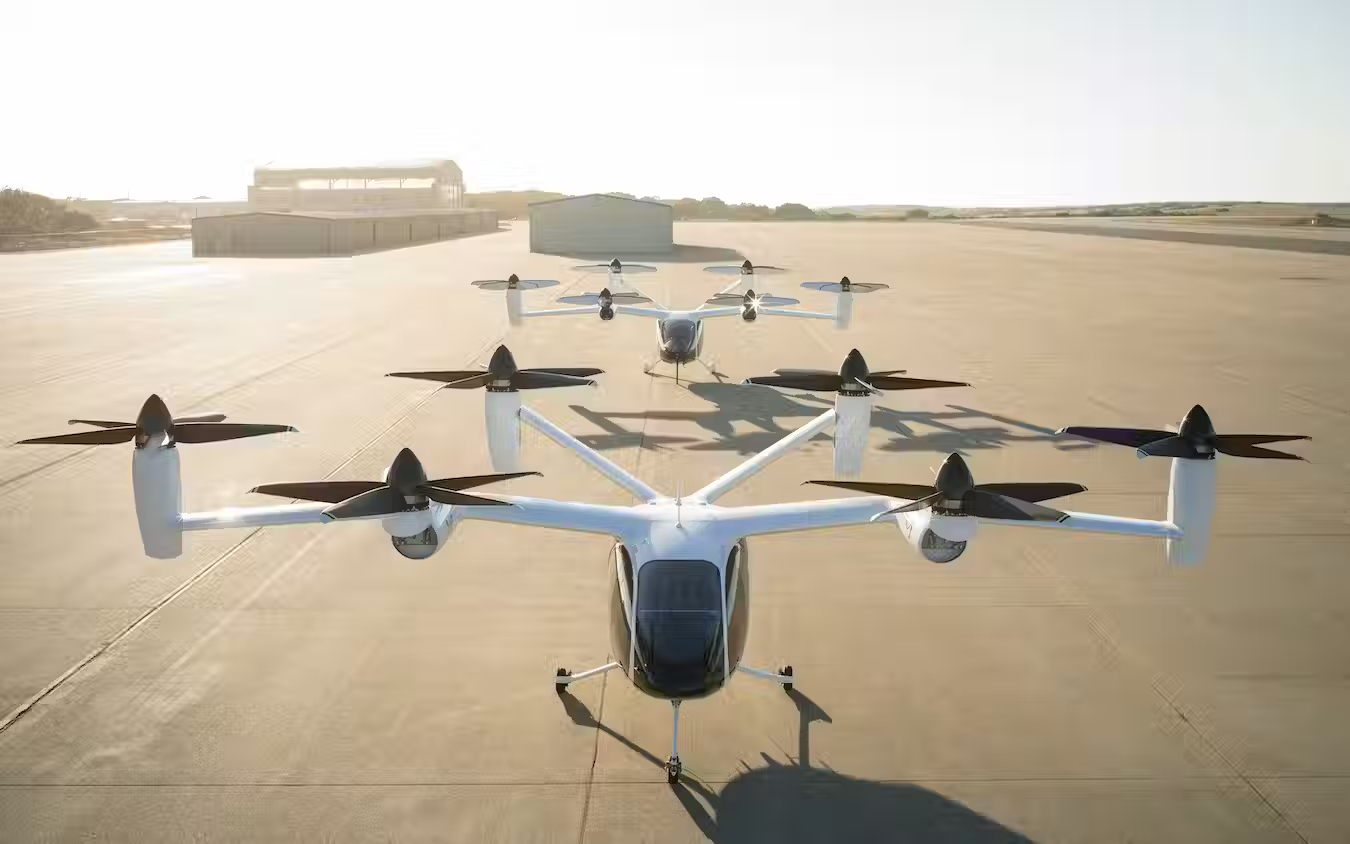Click Here to View This Page on Production Frontend
Click Here to Export Node Content
Click Here to View Printer-Friendly Version (Raw Backend)
Note: front-end display has links to styled print versions.
Content Node ID: 420142
At the Revolution.Aero conference on Wednesday in San Francisco, Joby Aviation head of product Eric Allison assured attendees that Joby expects its four-passenger eVTOL aircraft to begin commercial urban air mobility (UAM) operations in 2025. The company, which aims to launch its aerial ridesharing service in Los Angeles and New York City, is also working to add the eVTOL aircraft to its Part 135 operating certificate.
A majority of team members are working on the certification program, including type certification and production certification, Allison said. In July, Joby announced it had finished submitting its certification plans to the FAA, shortly after it rolled out the first production prototype at its pilot manufacturing facility in Marina, California.
“Certification is not to be underestimated,” Allison said. “It is a very arduous process on purpose. But that just gets us to the starting line.”
Joby’s approach to fielding an eVTOL aircraft is highly vertically integrated, with in-house design and development of flight control computers and systems, batteries, and other technology. “We think that’s the way to build the right integrated advanced system,” Allison said. “That’s the approach we’ve taken.”
The vertical integration extends to operating the aircraft, which Joby plans to do. “We’re developing a well-integrated suite of tools that allow us to run our operation with the aircraft we’re designing and building,” he said. “We think we have the right path for success.”
As it prepares to begin flying in communities that will be sensitive to noise, Joby continues to focus on noise reduction. “That’s one of the things that differentiates Joby in a meaningful way,” Allison said. “It’s a popular conception that you can sprinkle electric propulsion fairy dust to cut noise. But electric propulsion allows us to design aircraft that can be quiet, and Joby has helped some of those realizations come to pass.”
Specifically, he explained, “One of the high-order drivers of noise is tip speed on propellers. You have to spin them relatively slowly to drive dramatic changes to the noise profile.” The problem eVTOL developers face is they have to decide between efficiency and noise, both of which increase as the speed of the motor climbs. However, Allison explained, “You have to put more torque to get power.”
The choice is between adding a complex gearbox that allows the propellers to spin slower, or increasing the torque on the motor while keeping the propellers at a speed that reduces noise. “We tried both and decided it’s not worth it to take on the additional complexity of a gearbox,” he said. “We decided to engineer the highest-performance torque class and spin the propellers slowly.”
As it enters the final stretches of certification, Joby is replicating a process that traditional aircraft manufacturers have long adopted: preparing maintenance processes so a support team is ready when the aircraft enters service. For commercial operations, it is also developing an “operating system,” which he said “is extremely well-connected.”
While the Joby aircraft’s 100-mile range is somewhat limiting, Allison doesn’t see this as an issue, at least in the early stages of eVTOL operations. “I view electric propulsion as very much one of these disruptive technologies. It lets you design airplanes with low noise and operating costs. We do give up range, but we think it’s a tradeoff. We don’t need range if we can address a UAM market with low noise and cost.”
In any case, he expects improvements in battery technology to enable longer-range eVTOL flights in the future, and he said Joby could potentially employ hydrogen-electric technology in a subsequent model. For now, he concluded, “We’re focused on the first one, getting it to commercial service.”
